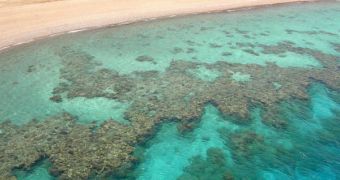Researchers investigating deep-sea coral reefs off the coast of Hawaii have recently announced that they believe they've discovered the old marine animals with a skeleton in the ocean, having dated a coral sample to more than 4,265 years ago. Unlike their shallow-water counterparts, deep-sea corals live at depths of 1,000 to 10,000 feet (300 to 3,000 meters), usually on top of underwater mountains, where they become host to a number of other creatures, including fully grown fish and microorganisms.
Despite the depth they live at, they are affected by the increasing pollution in very much the same way other types of reefs are. But their biggest challenge is ocean acidification, which causes the organisms living on them, which give them their specific color, to peel off them and wander in the water until their death. This process causes that known as “coral bleaching,” as the “color” of these creatures is actually given by the symbiotic organisms that live on them.
“These results show that Leiopathes is the oldest skeletal-accreting marine organism known and, to the best of our knowledge, the oldest colonial organism yet found,” Texas A&M University researchers write in the March 23rd issue of the journal Proceedings of the National Academy of Sciences (PNAS). Scientist Brendan Roark has been the one in charge of the A&M team that has estimated the age of the fossil skeletons in Hawaii with a technique known as carbon dating.
According to the scientists, it's only the outer skeletons that grow over the centuries and the millennia, while the tiny coral polyps that live inside only endure for a few years. This suggests that they are constantly replaced by new ones, while the skeleton around them continues to accrete more sediments. Estimates say that their shells grow by about one micrometer per year, which is much lower than their previously estimated growth speed.
There are numerous threats to the Hawaiian reefs, including deep-sea trawling, commercial fishing, as well as harvesting for jewelery. Locals take dives until they reach the reef, and then rip off the most beautiful parts of it, in order to make necklaces and bracelets, which are then sold to tourists, or offered as gifts. Solutions to help save the corals need to address all these problems, and not only a few of them.

 14 DAY TRIAL //
14 DAY TRIAL //